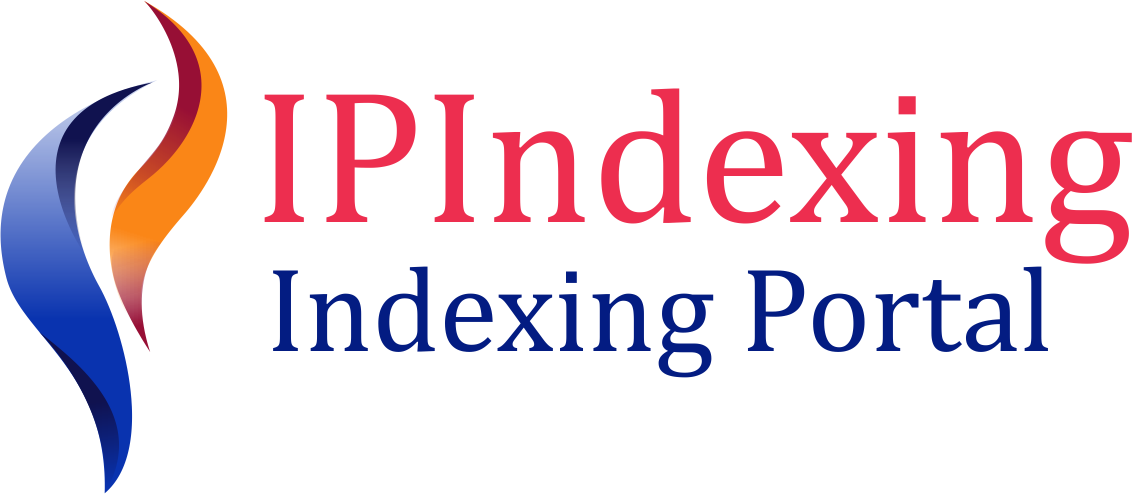MAIN DRIVERS OF TOBACCO CONSUMPTION AMONG YOUTHS: THE CASE OF KYRGYZSTAN
DOI:
https://doi.org/10.53753/jame.1.1.03Anahtar Kelimeler:
tobacco consumption- Heckman selection model- Kyrgyzstan- cross section data- microeconometricsÖzet
Tobacco smoking among youth is a global concern. Tobacco's dangers and the probability of addiction are often underestimated by young people. Preventing tobacco consumption among youth is critical since tobacco-related illnesses will take away the lives of 250 million young people who continue to smoke into adulthood. Youth are more vulnerable to nicotine and may become addicted to it quicker than adults. Even though they decide to stop in a few years, three out of four teen smokers continue to smoke into adulthood due to nicotine addiction.
The main purpose of this study is to investigate tobacco consumption of adolescents in Kyrgyzstan. For this aim, a school-based survey of students aged 13-15 years was utilized. Global Youth Tobacco Survey was conducted in 2019. The questionnaire consists of 56 questions. This survey was conducted in order to get knowledge about adolescents’ attitudes about smoking.
In the empirical analysis was employed Heckman selection model. In the light of obtained results it can be concluded that the main drivers of tobacco consumption among adolescents are age, gender, amount of spending money, parental smoking status, among others. The results indicate that tobacco consumption is higher among males. Parents smoking habit leads to a higher probability of an adolescents to become a smoker.
The outcomes from this study may provide some insights into the policies implemented to lessen smoking among adolescents.
İndirmeler
Referanslar
AHO, H., KOIVISTO, A.M., PAAVILAINEN, E. and JORONEN, K. (2018). Parental Involvement and Adolescent Smoking in Vocational Setting in Finland. Health Promotion International. 3(5), 846–857. https://doi.org/10.1093/heapro/dax027
ALASQAH, I., MAHMUD, I., EAST, L. and USHER, K. (2021). Prevalence of Smoking and Smoking Predictors among Adolescents in Qassim, Saudi Arabia: Does the Healthy City Programme Make Any Difference? Journal of Public Health. 1-8.
ALKAN, Ö. and ABAR, H. (2020). Determination of Factors Influencing Tobacco Consumption in Turkey Using Categorical Data Analyses. Archives of Environmental & Occupational Health. 75(1), 27-35.
ALKAN, Ö. and ÜNVER, Ş. (2021). Tobacco Smoke Exposure among Women in Turkey and Determinants. Journal of Substance Use, 1-7.
ALI, F. R. M., DAVE, D. M., COLMAN, G. J., WANG, X., SAFFER, H., MARYNAK, K. L., DENCH, D. and GROSSMAN, M. (2021). Association of E‐Cigarette Advertising with E‐Cigarette and Cigarette Use among US Adults. Addiction. 116, 1212–1223. https://doi.org/10.1111/add.15281.
BORRACCI R.A., MULASSI A.H. (2015). Tobacco Use During Adolescence May Predict Smoking During Adulthood: Simulation-Based Research. Arch Argent Pediatr, 113: 106–12.
CENTERS FOR DISEASE CONTROL AND PREVENTION (CDC) (2019). Ministry of Education and Science (Kyrgyzstan), Ministry of Health (Kyrgyzstan), World Health Organization (WHO). Kyrgyzstan Global Youth Tobacco Survey 2019. Atlanta, United States of America: Centers for Disease Control and Prevention (CDC).
DE VRIES, H., ENGELS, R., KREMERS, S., WETZELS, J. and MUDDE, A. (2003). Parents’ and Friends’ Smoking Status as Predictors of Smoking Onset: Findings from Six European Countries. Health Education Research. 18(5), 627–636, https://doi.org/10.1093/her/cyg032
DONFOUET, H.P.P., MOHAMED, S.F. and MALIN, E. (2021). Socioeconomic Inequality in Tobacco Use in Kenya: A Concentration Analysis. Int J Health Econ Manag. https://doi.org/10.1007/s10754-020-09292-0
GARCIA-GARCIA, E., MARTINEZ-GIMENO, M. L., BENITEZ-ANDRADES, J. A., MIRANDA-GÓMEZ, J., ZAPATA-CORNEJO, E. D. D. and ESCOBAR-AGUILAR, G. (2021). Substance Use and Addictive Behavior in Spanish Adolescents in Secondary School. in Healthcare (Vol. 9, No. 2, p. 186). Multidisciplinary Digital Publishing Institute.
GRANJA, G. L., LACERDA-SANTOS, J. T., DE MOURA BRILHANTE, D., DE SOUSA NÓBREGA, I., GRANVILLE-GARCIA, A. F., JUNIOR, A. D. F. C. and DOS SANTOS, J. A. (2020). Smoking and Alcohol Consumption among University Students of the Healthcare Area. Journal of Public Health. 28(1), 45-52.
GUIMARÃES, N. S., DE PAULA, W., DE AGUIAR, A. S. and MEIRELES, A. L. (2021). Absence of Religious Beliefs, Unhealthy Eating Habits, Illicit Drug Abuse, and Self-Rated Health is Associated with Alcohol and Tobacco Use among College Students—Padu Study. Journal of Public Health, 1-9.
GUTEMA, B.T., CHUKA, A. et al. (2021). Tobacco Use and Associated Factors Among Adults Reside in Arba Minch Health and Demographic Surveillance Site, Southern Ethiopia: A Cross-Sectional Study. BMC Public Health. 21(1).
HECKMAN, J. (1979). Sample Selection Bias as a Specification Error. Econometrica 45, 153–161.
IBARRA-SALAZAR, J., ROMERO-ROJAS, J. C. and AYALA-GAYTÁN, E. (2020). The Duration Effect of Pictorial Health Warnings on Tobacco Consumption in Mexico. Global Public Health. 1-19.
IHME, (Institute for Health Metrics and Evaluation) Global Burden of Disease (2021). http://www.healthdata.org/gbd/2019
JAIN, V., AL-RIFAI, M., NADERI, S., BAROLIA, R., IQBAL, S., TAJ, M. and VIRANI, S. S. (2021). Association of Smokeless Tobacco Use with the Use of Other Illicit Drugs in the United States. The American Journal of Medicine, 134(1), e15-e19.
KIM, D. and PARK, H. (2021). Effects of a Cigarette Price Increase on the Smoking Behavior of Smokers and Non-smokers. American Journal of Health Behavior. 45(2), 205-215.
KYRGYZSTAN TINY TARGETS REPORT (2018). Report prepared for the Campaign for Tobacco-Free Kids by Grassriots Inc Kyrgyzstan Tiny Targets Report: Tobacco Advertisement, Sales, Product Displays, and Purchase Incentives Around Primary, and Secondary Schools. Toronto, ON; -Washington, DC 2017
KLOSTERHALFEN, S., KOTZ, D., KUNTZ, B., ZEIHER, J. and Starker, A. (2020). Waterpipe Use among Adolescents in Germany: Prevalence, Associated Consumer Characteristics, and Trends (German Health Interview and Examination Survey for Children and Adolescents, KiGGS). International Journal of Environmental Research and Public Health. 17(21). DOI: 10.3390/ijerph17217740
LA FAUCI, V., MONDELLO, S., SQUERI, R., ALESSI, V., GENOVESE, C., LAUDANI, N. and CATTARUZZA, M.S. (2021). Family, Lifestyles and New and Old Type of Smoking in Young Adults: Insights from an Italian Multiple-Center Study. Ann Ig. 33(2), 131-140. doi: 10.7416/ai.2021.2419. PMID: 33570085.
LAZURENKO, N.V., PODPORINOVA, N.N., POLENOVA, M.E., KOVALCHUK, O.V. and KOROLEVA, K.I. (2020). Social Factors of Spreading of Tobacco Smoking Among College Students. Revista San Gregorio, 37, 174-181.
MADDEN, D. (2008). Sample Selection Versus Two-Part Models Revisited: The Case of Female Smoking and Drinking. Journal of Health Economics, 27(2), 300-307.
MUTLU ÇAMOĞLU, S. (2013). Türkiye’de Sigara Talebinin Analizi: İki aşamalı Heckman Süreci. EY International Congress on Economics I "Europe and Global Economic Rebalancing” October 24-25, 2013, Ankara/Turkey
NKOMO, Y.N., BEATRICE, D.S.K. and BIYASE, M. (2021). The Impact of Mental Health Behaviour on Tobacco Consumption in South Africa. EDWRG Working Paper Number 02-2021.
OUR WORLD IN DATA (2021). https://ourworldindata.org/
PIOLA, T.S., PACIFICO, A.B., CAMPOS, J.G., RIBEIRO, A.G., BACIL, E.D., SILVA, M.P., et al. (2021). Cell Phone Use is Associated with Alcohol and Tobacco Consumption in Insufficiently Active Adolescents. J Sports Med Phys Fitness. 61, 444-51. DOI: 10.23736/S0022-4707.20.11356-2
POLLAY, R.W., SIDDARTH, S., SIEGEL, M., et al. (1996). The Last Straw? Cigarette Advertising and Realized Market Shares Among Youths and Adults, 1979-1993. Journal of Marketing. 60, 1–16.
ROBERTSON, L., CAMERON, C., MCGEE, R., MARSH, L., and HOEK, J. (2016). Point-of-Sale Tobacco Promotion and Youth Smoking: A Meta-Analysis. Tobacco Control.; 25(e2):e83-e9. Available from: https://www.ncbi.nlm.nih.gov/pubmed/26728139
THE TOBACCO ATLAS (2021). http://files.tobaccoatlas.org/wp-content/uploads/pdf/kyrgyzstan-country-facts-en.pdf
TOBACCO CONTROL (2002). The Global Youth Tobacco Survey Collaborative Group (US Centers for Disease Control and Prevention; the World Health Organization, the Canadian Public Health Association, and the U.S. National Cancer Institute). Tobacco use among youth: a cross country comparison., 11: 252-270.
US DEPARTMENT OF HEALTH & HUMAN SERVICES (2017). Preventing Tobacco Use Among Youths, Surgeon General fact sheet 2017) https://www.hhs.gov/surgeongeneral/reports-and-publications/tobacco/preventing-youth-tobacco-use-factsheet/index.html
VINNIKOV, D., LAHDENSUO, A. and BRIMKULOV, N. (2006). Medical Students of Kyrgyzstan: Smoking Prevalence and Attitudes to Smoking Cessation Counseling. Global Heart. 2(1), 31–37. DOI: http://doi.org/10.1016/j.precon.2006.07.002
WOOLDRIDGE, J.M. (2002). Econometric Analysis of Cross Section and Panel Data. Cambridge, MA: MIT Press.
WHO (2002). The Tobacco Atlas (first edition, 2002) https://www.who.int/tobacco/resources/publications/tobacco_atlas/en/
WHO (2018). Consumption and Approaches to the Regulation of Nasvay in the Commonwealth of Independent States. https://www.euro.who.int/__data/assets/pdf_file/0010/391762/Consumption-and-approaches-to-the-regulation-of-nasvay-in-CIS_EN.pdf
WORLD BANK (2020). https://data.worldbank.org/indicator/SH.PRV.SMOK?locations=KG
Zuzana, S.; Sonia, I.; Cristina, S. Understanding the drivers for Natura 2000 payments in forests: A Heckman selection analysis. J. Nat. Conserv. 2018
İndir
Yayınlanmış
Nasıl Atıf Yapılır
Sayı
Bölüm
Lisans
Telif Hakkı (c) 2021 Jolistence Publications

Bu çalışma Creative Commons Attribution 4.0 International License ile lisanslanmıştır.









